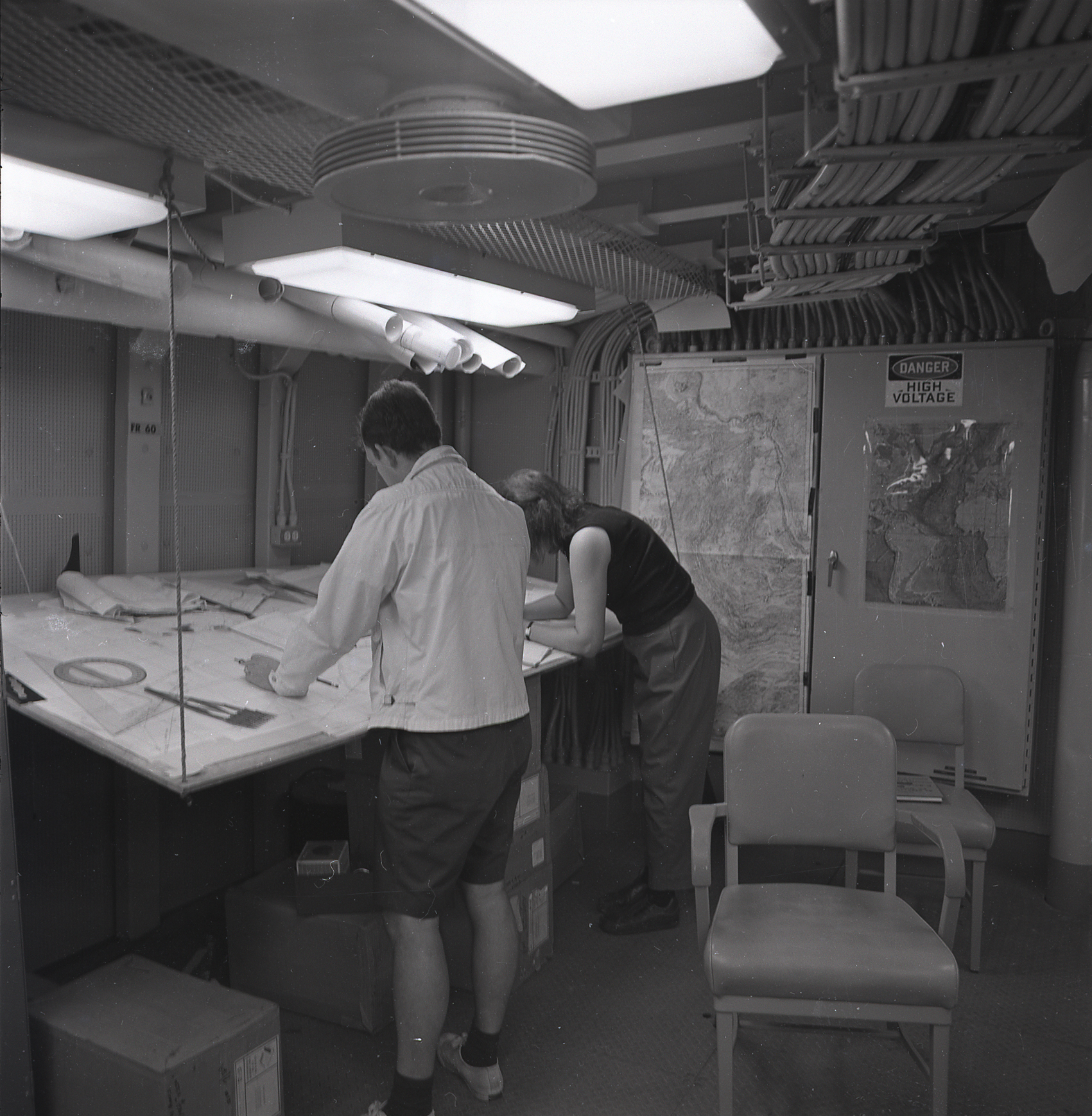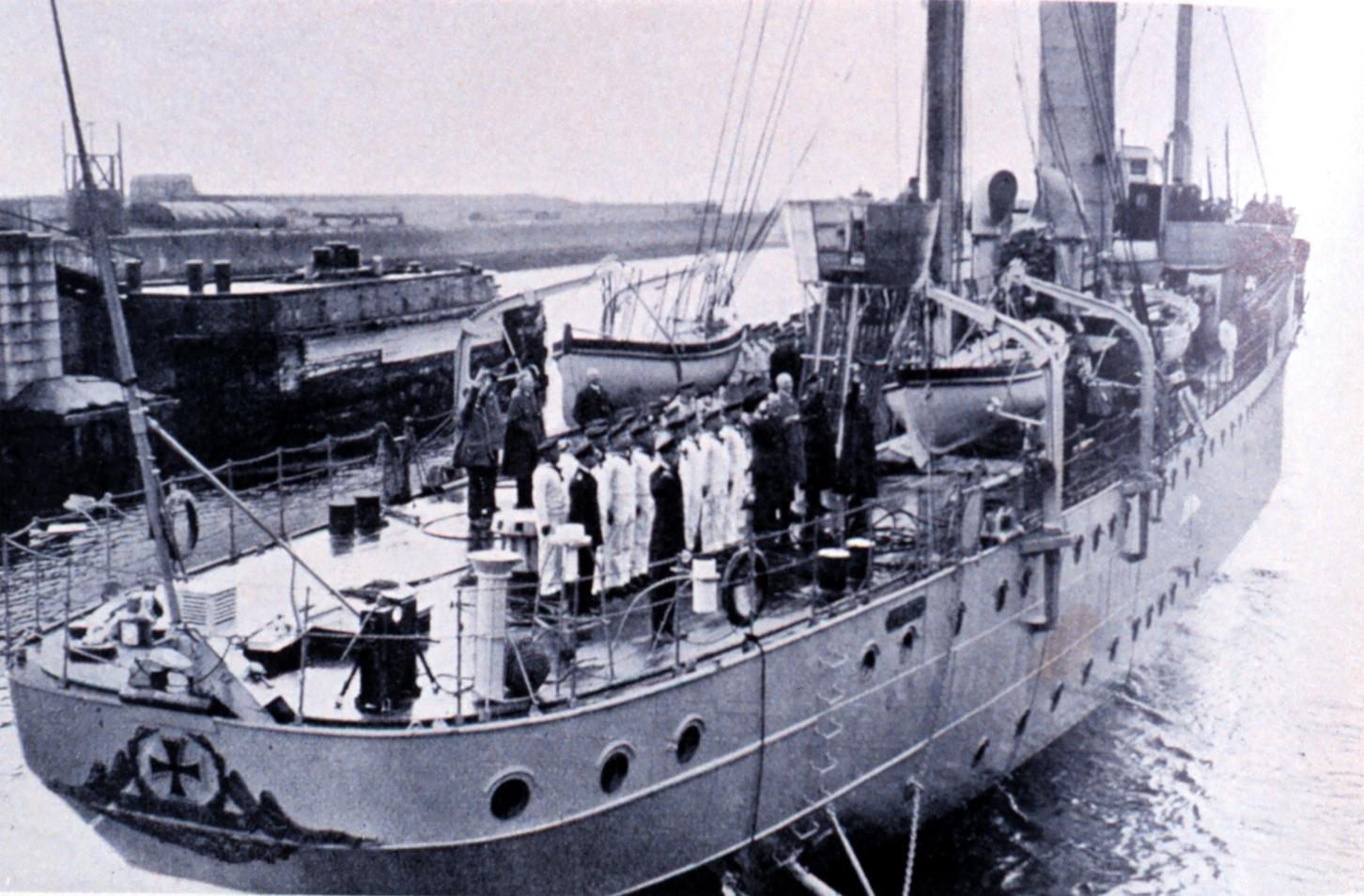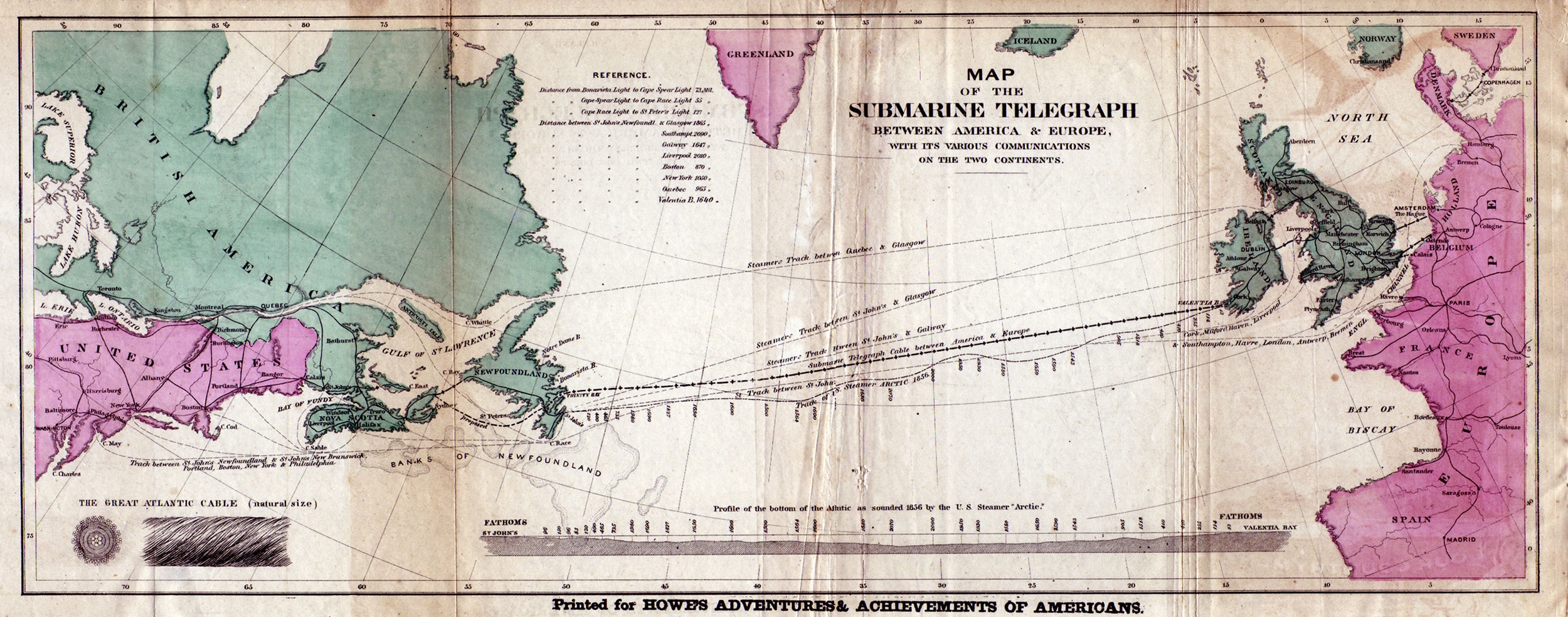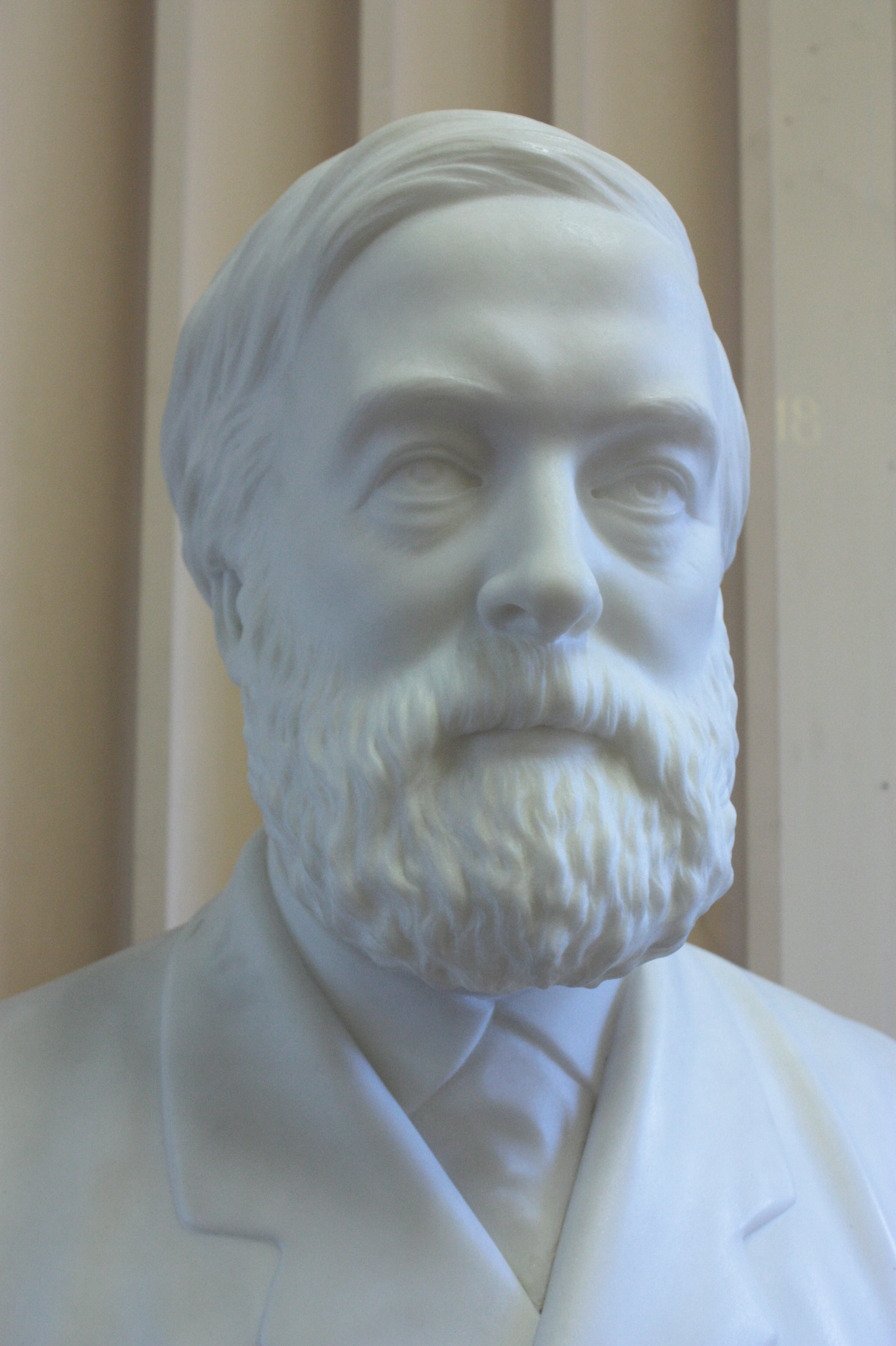|
Mid-Atlantic Ridge
The Mid-Atlantic Ridge is a mid-ocean ridge (a Divergent boundary, divergent or constructive Plate tectonics, plate boundary) located along the floor of the Atlantic Ocean, and part of the List of longest mountain chains on Earth, longest mountain range in the world. In the North Atlantic, the ridge separates the North American plate, North American from the Eurasian plate and the African plate, north and south of the Azores triple junction. In the South Atlantic, it separates the African plate, African and South American plate, South American plates. The ridge extends from a junction with the Gakkel Ridge (Mid-Arctic Ridge) northeast of Greenland southward to the Bouvet triple junction in the South Atlantic. Although the Mid-Atlantic Ridge is mostly an underwater feature, portions of it have enough elevation to extend above sea level, for example in Iceland. The ridge has an average spreading rate of about per year. Discovery A ridge under the northern Atlantic Ocean was first ... [...More Info...] [...Related Items...] OR: [Wikipedia] [Google] [Baidu] |
Atlantic Bathymetry
The Atlantic Ocean is the second largest of the world's five oceanic divisions, with an area of about . It covers approximately 17% of Earth's surface and about 24% of its water surface area. During the Age of Discovery, it was known for separating the New World of the Americas (North America and South America) from the Old World of Afro-Eurasia (Africa, Asia, and Europe). Through its separation of Afro-Eurasia from the Americas, the Atlantic Ocean has played a central role in the development of human society, globalization, and the histories of many nations. While the Norse were the first known humans to cross the Atlantic, it was the expedition of Christopher Columbus in 1492 that proved to be the most consequential. Columbus's expedition ushered in an age of exploration and colonization of the Americas by European powers, most notably Portugal, Spain, France, and the United Kingdom. From the 16th to 19th centuries, the Atlantic Ocean was the center of both an eponymous ... [...More Info...] [...Related Items...] OR: [Wikipedia] [Google] [Baidu] |
USS Dolphin (1836)
The third USS ''Dolphin'' was the brig in the United States Navy. Her plans were the basis of other brigs of that time. She was named for the aquatic mammal. She was launched on 17 June 1836 at New York Navy Yard, and commissioned on 6 September 1836. She sailed on 6 October under the command of Lieutenant W. E. McKenney to join the Brazil Squadron after a short cruise on the coast of Africa. She joined her squadron on 21 February 1837, and was employed in the waters along the Atlantic coast of South America to protect the rights and property of American citizens. She set sail from Bahia, Brazil on 17 April 1839, and arrived at New York City on 16 May, where she was decommissioned on 25 May. ''Dolphin'' made two cruises off the coast of Africa to suppress the slave trade from 18 December 1839 to 14 July 1840, and again from 5 November 1840 to 25 May 1841. On 7 September, she sailed to join the newly-organized Home Squadron cruising on the Atlantic coast and in the West Indi ... [...More Info...] [...Related Items...] OR: [Wikipedia] [Google] [Baidu] |
Maurice Ewing
William Maurice "Doc" Ewing (May 12, 1906 – May 4, 1974) was an American geophysicist and oceanographer. Ewing has been described as a pioneering geophysicist who worked on the research of seismic reflection and refraction in ocean basins, ocean bottom photography, submarine sound transmission (including the SOFAR channel), deep sea core samples of the ocean bottom, theory and observation of earthquake surface waves, fluidity of the Earth's core, generation and propagation of microseisms, submarine explosion seismology, marine gravity surveys, bathymetry and sedimentation, natural radioactivity of ocean waters and sediments, study of abyssal plains and submarine canyons. Biography He was born in Lockney, Texas, where he was the eldest surviving child of a large farm family. He won a scholarship to attend Rice University, earning a BA with honors in 1926. He completed his graduate studies at the same institution, earning an MA in 1927 and being awarded his PhD ... [...More Info...] [...Related Items...] OR: [Wikipedia] [Google] [Baidu] |
Bruce C
The English language name Bruce arrived in Scotland with the Normans, from the place name Brix, Manche in Normandy, France, meaning "the willowlands". Initially promulgated via the descendants of king Robert the Bruce (1274−1329), it has been a Scottish surname since medieval times; it is now a common male given name. The variant ''Lebrix'' and ''Le Brix'' are French variations of the surname. Note: A few people are notable in more than one field, and therefore appear in more than one section. Arts and entertainment Film and television * Bruce Altman (born 1955), American actor * Bruce Baillie (1931–2020), American filmmaker * Bruce Bennett (1906–2007), American actor and athlete * Bruce Berman (born 1952), American film producer * Bruce Boa (1930–2004), Canadian actor * Bruce Boxleitner (born 1950), American actor * Bruce Campbell (born 1958), American actor, director, writer, producer and author * Bruce Conner (1933–2008), American artist and filmmaker * Br ... [...More Info...] [...Related Items...] OR: [Wikipedia] [Google] [Baidu] |
Marie Tharp
Marie Tharp (July 30, 1920 – August 23, 2006) was an American geologist and oceanographic cartographer. In the 1950s, she collaborated with geologist Bruce Heezen to produce the first scientific map of the Atlantic Ocean floor. Her cartography revealed a more detailed topography and multi-dimensional geographical landscape of the ocean bottom. Tharp's discovery of the Mid-Atlantic Ridge caused a paradigm shift in earth science that led to the acceptance of the theories of plate tectonics and continental drift. Early life and education Marie Tharp was born on July 30, 1920, in Ypsilanti, Michigan, the only child of Bertha Louise Tharp, a German and Latin teacher, and William Edgar Tharp, a soil surveyor for the United States Department of Agriculture. She often accompanied her father on his fieldwork, which gave her an early introduction to mapmaking. Despite this, she had no interest in pursuing a career in fieldwork as, during that time, this was understood to be me ... [...More Info...] [...Related Items...] OR: [Wikipedia] [Google] [Baidu] |
Seafloor Mapping
The seabed (also known as the seafloor, sea floor, ocean floor, and ocean bottom) is the bottom of the ocean. All floors of the ocean are known as seabeds. The structure of the seabed of the global ocean is governed by plate tectonics. Most of the ocean is very deep, where the seabed is known as the abyssal plain. Seafloor spreading creates mid-ocean ridges along the center line of major ocean basins, where the seabed is slightly shallower than the surrounding abyssal plain. From the abyssal plain, the seabed slopes upward toward the continents and becomes, in order from deep to shallow, the continental rise, Continental slope, slope, and Continental shelf, shelf. The depth within the seabed itself, such as the depth down through a sediment core, is known as the "depth below seafloor". The ecological environment of the seabed and the deepest waters are collectively known, as a habitat for creatures, as the "benthos". Most of the seabed throughout the world's oceans is covered in ... [...More Info...] [...Related Items...] OR: [Wikipedia] [Google] [Baidu] |
German Meteor Expedition
The German Meteor expedition ( German: ''Deutsche Atlantik Expedition'') was an oceanographic expedition that explored the South Atlantic ocean from the equatorial region to Antarctica in 1925–1927. Depth soundings, water temperature studies, water samples, studies of marine life and atmospheric observations were conducted.Stein Expedition The survey vessel left Wilhelmshaven on 16 April 1925 with the oceanographer Alfred Merz in charge of the expedition.Nieder and Schroeder The ship zigzagged between Africa and South America and took echo soundings of the South Atlantic between 20° North and 60° South. In January 1926 the Strait of Magellan was transited; in March the same year a seamount was found and named ''Meteor Bank'' (). In June 1926 Merz, who already had health problems before the start of the expedition, was hospitalised at the German Hospital in Buenos Aires. He died of pneumonia on 25 August 1926. The overall lead of the expedition was assumed by the ship's c ... [...More Info...] [...Related Items...] OR: [Wikipedia] [Google] [Baidu] |
Indian Ocean
The Indian Ocean is the third-largest of the world's five oceanic divisions, covering or approximately 20% of the water area of Earth#Surface, Earth's surface. It is bounded by Asia to the north, Africa to the west and Australia (continent), Australia to the east. To the south it is bounded by the Southern Ocean or Antarctica, depending on the definition in use. The Indian Ocean has large marginal or regional seas, including the Andaman Sea, the Arabian Sea, the Bay of Bengal, and the Laccadive Sea. Geologically, the Indian Ocean is the youngest of the oceans, and it has distinct features such as narrow continental shelf, continental shelves. Its average depth is 3,741 m. It is the warmest ocean, with a significant impact on global climate due to its interaction with the atmosphere. Its waters are affected by the Indian Ocean Walker circulation, resulting in unique oceanic currents and upwelling patterns. The Indian Ocean is ecologically diverse, with important ecosystems such ... [...More Info...] [...Related Items...] OR: [Wikipedia] [Google] [Baidu] |
Cape Agulhas
Cape Agulhas (; , "Cape of Needles") is a rocky headland in Western Cape, South Africa. It is the geographic southern tip of Africa and the beginning of the traditional dividing line between the Atlantic and Indian oceans according to the International Hydrographic Organization. It is approximately half a degree of latitude, or , farther south than the Cape of Good Hope. Historically, the cape has been known to sailors as a major hazard on the traditional clipper route. It is sometimes regarded as one of the great capes. It was most commonly known in English as Cape L'Agulhas until the 20th century. The town of L'Agulhas is near the cape. Geography Cape Agulhas is located in the Overberg region, 170 kilometres (105 mi) southeast of Cape Town. The cape was named by Portuguese navigators, who called it ''Cabo das Agulhas''— Portuguese for "Cape of Needles"—after noticing that around the year 1500 the direction of magnetic north (and therefore the compass ne ... [...More Info...] [...Related Items...] OR: [Wikipedia] [Google] [Baidu] |
University Of Oklahoma
The University of Oklahoma (OU) is a Public university, public research university in Norman, Oklahoma, United States. Founded in 1890, it had existed in Oklahoma Territory near Indian Territory for 17 years before the two territories became the state of Oklahoma. In Fall 2024, the university had 34,523 students enrolled, most at its main campus in Norman. Employing nearly 4,000 faculty members, the university offers 174 Bachelor's degree, baccalaureate programs, 199 Master's degree, master's programs, 101 Doctorate, doctoral programs, and 88 certificate programs. The university is Carnegie Classification of Institutions of Higher Education, classified among "R1: Doctoral Universities – Very high research activity", with over $416 million in research expenditures across its three campuses in 2022. Its Norman campus has two prominent museums, the Fred Jones Jr. Museum of Art, specializing in French Impressionism and Native Americans in the United States, Native American artwork, ... [...More Info...] [...Related Items...] OR: [Wikipedia] [Google] [Baidu] |
Transatlantic Telegraph Cable
Transatlantic telegraph cables were undersea cables running under the Atlantic Ocean for telegraph communications. Telegraphy is a largely obsolete form of communication, and the cables have long since been decommissioned, but telephone and data are still carried on other transatlantic telecommunications cables. The Atlantic Telegraph Company led by Cyrus West Field constructed the first transatlantic telegraph cable. The project began in 1854 with the first cable laid from Valentia Island off the west coast of Ireland to Bay of Bulls, Trinity Bay, Newfoundland. The first communications occurred on August 16, 1858, but the line speed was poor. The first official telegram to pass between two continents that day was a letter of congratulations from Queen Victoria of the United Kingdom to President of the United States James Buchanan. Signal quality declined rapidly, slowing transmission to an almost unusable speed. The cable was destroyed after three weeks when Wildman ... [...More Info...] [...Related Items...] OR: [Wikipedia] [Google] [Baidu] |
Charles Wyville Thomson
Sir Charles Wyville Thomson (5 March 1830 – 10 March 1882) was a Scottish natural historian and marine zoologist. He served as the chief scientist on the ''Challenger'' expedition; his work there revolutionized oceanography and led to his being knighted. Life Thomson was born at Bonsyde, in Linlithgow, West Lothian, on 5 March 1830, the son of Andrew Thomson, a surgeon in the service of the East India Company, and his wife Sarah Ann Drummond Smith. He was baptised Wyville Thomas Charles Thomson, but changed his name formally upon being knighted in 1876. He was educated under Charles Chalmers at Merchiston Castle School, then from 1845 studied medicine at the University of Edinburgh graduating with an MD. However, his focus turned from medicine to natural science, and he joined the Botanical Society of Edinburgh in 1847, and soon after became secretary to the Royal Physical Society of Edinburgh. In 1850 he was attending the botany class of John Hutton Balfour at the un ... [...More Info...] [...Related Items...] OR: [Wikipedia] [Google] [Baidu] |








